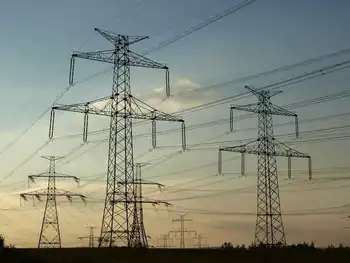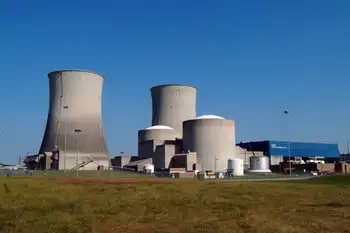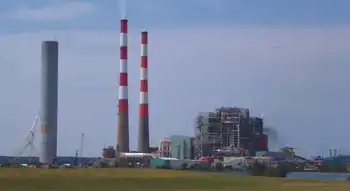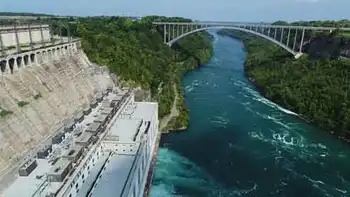Reactor shutdown opens door to Russia plans
By Associated Press
Protective Relay Training - Basic
Our customized live online or in‑person group training can be delivered to your staff at your location.

- Live Online
- 12 hours Instructor-led
- Group Training Available
To Lithuanians, however, the twin concrete reactor blocks of the Ignalina plant, rising amid lakes and oak forests near the country's eastern border, have been a symbol of energy independence since the small Baltic country regained its freedom after the 1991 Soviet collapse.
That is why the EU-ordered shutdown of the plant's last working reactor — considered too similar to the one that exploded at Chernobyl in 1986 — is making Lithuanians uneasy. They now face the prospect of importing energy from Russia, considered an unreliable energy partner by many after its state-owned gas company shut off supplies through Ukraine last year and in 2006 over price disputes.
Lithuania will wake up January 1 with 40 percent less generating capacity, a gap that has set off a race to build new, safer nuclear plants to supply electricity to the Baltics and Eastern Europe, a race Moscow is trying mightily to win.
On top of that, Lithuanians will pay more for electricity at a time when their economy is in a deep recession.
"We'll have to pay two or three times more for energy, and our competitiveness in European markets will be damaged," said Bronislovas Lubys, CEO of the Achema Group, a chemical consortium. The country's central bank says the loss of the plant will cost the economy an additional 1 percent a year.
In the eastern town of Visaginas, where the Ignalia plant is located, the mood is grim. Some 80 percent of of the town's residents are Russian speakers who moved there in the 1980s to build the hulking twin concrete reactor blocks.
"Lithuania's economy and energy industry are not prepared to live without a nuclear power plant," plant chief Viktor Shevaldin told The Associated Press. "Prices for consumers will increase starting in 2010, and this will undoubtedly affect the population's standard of living, industry and the economy as a whole."
The shutdown comes even as the EU seeks more energy independence from Russia, though it refused Lithuanian efforts to revisit the Ignalina shutdown.
The EU wanted the 1980s plant shut down as a condition of EU membership because the two RBMK-1500 model reactors are too similar to the RBMK-1000 version that exploded at Chernobyl on April 26, 1986, casting a radioactive cloud over Europe. Ignalina's first reactor was shut down in 2004, while the second will be disconnected from the power grid an hour before midnight December 31.
Come January 1, the country will cover the shortfall by buying kilowatts on the open market — from Estonia, Belarus, Ukraine and Russia. By 2013 it hopes to build a new natural-gas power plant, but that would fall short of meeting its own energy needs.
Russia is ready to fill the gap, and is gearing up to build a two-reactor nuclear plant just 10 miles from the Lithuanian border in Russia's exclave of Kaliningrad, wedged between Poland and Lithuania.
The planned $5 billion Baltic Nuclear Power Plant, to be built near town of Sovetsk, would be overkill for Kaliningrad, a region of 1 million people whose future energy are already taken care of by a planned a planned gas-fired power plant to be built by 2012.
"We'll export all the output from the nuclear power plant... we've never concealed that fact," Kaliningrad's regional governor, Georgy Boos, told The Associated Press in his office in the exclave. "By 2016, when we launch the first reactor, there will be a huge energy shortage" throughout the Baltic Sea region, he said.
To assuage European fears about reliance on Russian kilowatts, Russia is offering foreign investors a minority stake in the new plant.
The problem is, Lithuania is essentially courting the same pool of investors for its own planned new plant in Visaginas. If the Russian plant is already established, Lithuania will be hard pressed for a market for its own future plant.
Because Lithuania still functions on the old Soviet power grid, it is isolated from Europe's — though the EU is working over the long term on building new connections to change that.
Lithuania is pinning its hopes on two possible alternatives: a 600 million euro underwater power cable with Sweden, and a 1.1 billion euro grid connection beween Alytas, Lithuania and Elk in northern Poland.
But the link with Sweden will require eight years, and the one with Poland a decade, according to a new EU study. This is why Ignalina plant boss Shevaldin thinks Lithuania's chances of finding investors "aren't very good."
"Russia has the advantage since it already knows what kind of reactor it will build. In this sense they'll build their station quicker than Lithuania," Shevaldin, a native Russian who moved to Lithuania in the 1980s.
Belarus is also eager to join the competition and have Russia's Rosatom build its first nuclear plant, which would go up not far across the border from the Lithuanian capital of Vilnius. Russia has expressed willingness not only to build the plant but also to help with finance.
Still, the Russian plans face obstacles. There are no grid connections between Poland and Kaliningrad, and those that exist between Kaliningrad and Lithuania will need to be upgraded. Given their distrust of Russia, the Poles and Lithuanians might not cooperate.
With the three nuclear plants planned in the same region, things could get crowded.
"The construction of a nuclear power plant is very expensive — the economic costs of waste disposal and environmental risks are huge," said energy specialist Claudia Kemfert at the German Institute for Economic Research in Berlin. "So I do not believe that all the planned projects will be realized because of economic costs. I could imagine that one of the three will be."
The Russians have fast-tracked the Kaliningrad project, squeezing 4-7 years of environmental impact studies and licensing into less than two years.
Public opinion in Kaliningrad is against the project, says Alexandra Koroleyva, who heads the region's branch of Eco-Defense, an environmental group opposed to nuclear energy. "There's a lot of people who moved here from Chernobyl, so you'll rarely meet someone on the street who'll say they want an atomic power plant," said Alexandra Koroleva.
"I hope I'm not around when it begins operating," said resident Ivan Trutnev, 72. "I know they've got this advanced technology nowadays, but if one thing goes wrong, it'll all be over."











